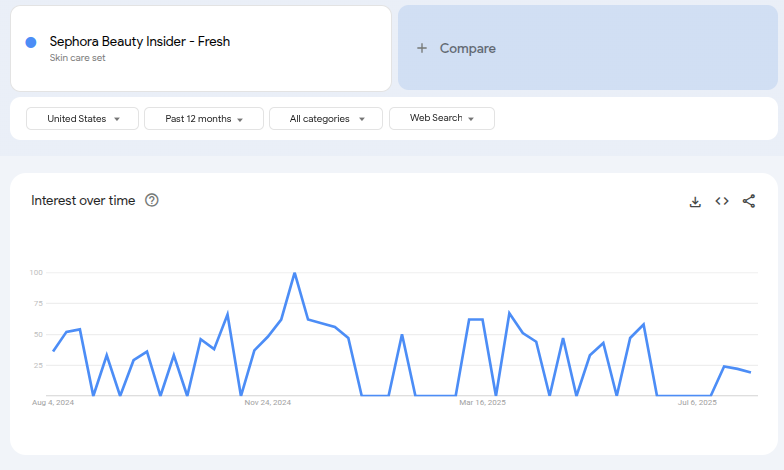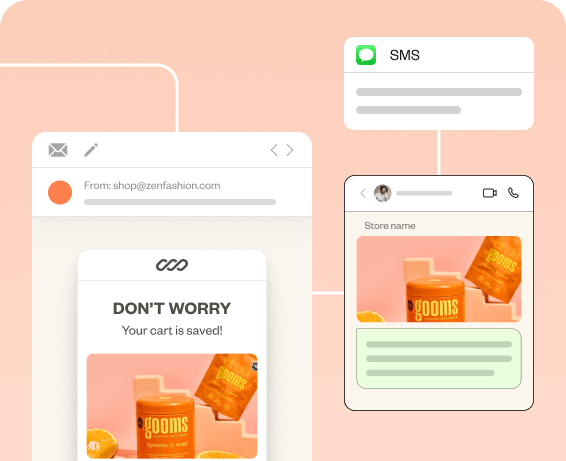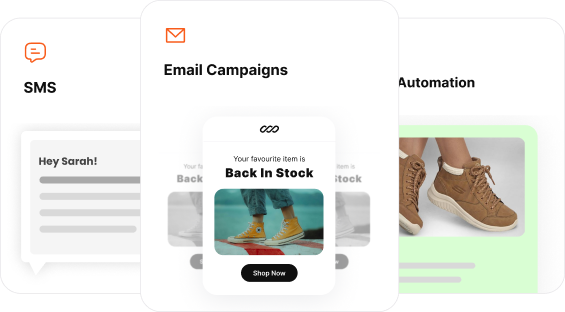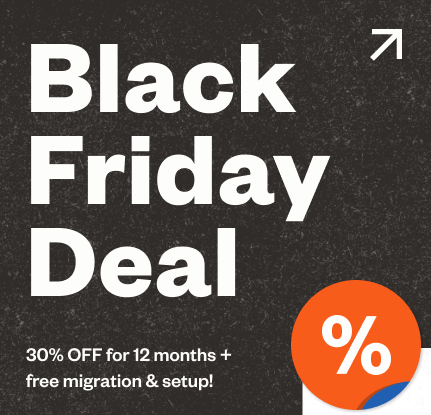A repeat customer spends an average of 67% more than a new customer. Moreover, it costs 5 times more to acquire a new customer than to retain your existing customers.
These stats are like top-of-the-mind reasons why a business needs repeat customers. There is more.
While the financial benefits are clear, the real challenge for most businesses is knowing how to attract repeat customers.
If you've found yourself asking:
- What is a good repeat customer rate?
- How to thank your returning customers?
- Repeat customers vs recurring customers vs returning customers
- Why should businesses pursue repeat customers?What kind of discounts and perks should to offer for your returning customers?
- Strategies to bring in repeat customers,
then you're in the right place. By the end of this article, you will have the answers to these questions.
Save 5X on marketing spends with repeat customers using Retainful’s personalized omnichannel campaigns.
What Are Repeat Customers (Repeat Buyers)?
A repeat customer is someone who has purchased from the same business multiple times over time. They exhibit customer satisfaction and strong loyalty towards the brand.
Related Reading: Retention Marketing: Strategies + Examples (2025)
Repeat Customer Rate (RCR)
Repeat Customer Rate measures the percentage of customers who have made at least two purchases from your business within a specific time frame.
RCR answers: Of all the customers who bought from me, what percentage of them came back to buy again?
How to calculate Repeat Customer Rate:
Repeat Customer Rate = (Number of Repeat customers / Total Number of customers) x 100
What is a Good Repeat Customer Rate?
There is no single good RCR, as the benchmark varies significantly depending on your industry, business model. However, 25-30% is considered a healthy benchmark for most e-commerce businesses.
Repeat Customers vs Recurring Customers vs Returning Customers
| Aspect | Returning Customers | Repeat Customers | Recurring Customers |
| Definition | A customer who has purchased once and is coming back to purchase again | A customer who has made multiple purchases over time. | A customer who makes regular purchases |
| Buying Pattern | Inconsistent and unpredictable | Consistent | Consistent and predictable |
| Primary Driver | Positive experience, convenience, or a specific need. | Satisfaction, brand loyalty, and trust. | Convenience, predictable budgeting, and cost savings |
| Impact | Growth Opportunities. | Consistent Revenue. | Predictable, Long-Term Value. |
| Retention Strategy | Create a positive customer experience and excellent customer service | Reward loyalty. Implement a comprehensive loyalty program | Offer exclusive perks and streamline your auto-payment option to reduce friction. |
Why Do Businesses Want Repeat Customers?
A well-established brand in any industry has a loyalty program that is dedicated to bringing in loyal repeat customers. In fashion, Sephora has a Beauty Insider Program that is aimed at retaining its customers.
For recurring customers, Amazon uses its Amazon Prime membership to retain its audience. Moreover, Prime members have an exceptional retention rate of 93% after one year and 98% after two years.
These are just 2 examples, but all the businesses unanimously focus on retaining their customers for the same benefits.
Here are the top 6 benefits of having repeat customers:
- Higher Revenue and Profitability: Repeat customers are more profitable because they spend an average of 67% more per order than new customers. Their CLV is significantly higher, and a small increase in customer retention can increase profits by 25% to 95%.
- Lower Costs: It's much more cost-effective to retain an existing customer than to acquire a new one. The cost of new customer acquisition can be 5 to 25 times higher.
- Predictable Income: Loyal customers create a stable and predictable revenue stream, making it easier for businesses to forecast sales, manage inventory, and plan for future growth.
- Marketing: Happy, loyal customers act as free brand ambassadors. They are more likely to recommend the business to others through word-of-mouth marketing.
- Increased Sales Probability: The chance of making a sale to an existing customer is 60-70%, compared to just 5-20% for a new customer. This is because they already trust the brand and are familiar with its offerings.
- User-Generated Content: Loyal customers are more likely to share their positive experiences on social media and leave positive reviews, providing powerful social proof that attracts new buyers.
Related Reading: What is Email Marketing? - An Ultimate Beginner's Guide
10 Proven Strategies to Increase Repeat Customers
A one-time customer is not the end of the customer journey; rather, they are one of the beginning stages. Converting a one-time customer to a recurring or repeat customer is crucial for the sustainable growth of a business.
But how to get repeat customers?
Here are 10 proven strategies to increase repeat customers:
- Develop a Strong Onboarding Process
- Exceptional and Personalized Customer Service
- Customer Loyalty Program
- Engage with Post-Purchase Communication
- Create an Autopayment or "Subscribe and Save" Option
- Make Reordering as Easy as Possible
- Reward Customer Referrals
- Actively Ask For Feedback
- Use Data to Re-engage Inactive Customers
- Track and Adjust Based on Your Results
Related Reading: Ecommerce Email Marketing: Strategies + Software
1. Develop a Strong Onboarding Process
A strong onboarding process helps guide them from their first purchase to their first win with your product.
Start with a welcome sequence. With a welcome message you can clearly set the expectations and give a clear next step. Moreover, including a first-time offer in your welcome message can significantly increase the chance of a purchase.
Followed by welcome emails, send guidance on how to use the purchased product, and create communication channels for troubleshooting.
Pro tip:
Instead of one channel, use omnichannel marketing, to provide a cohesive onboarding and user experience.
2. Exceptional and Personalized Customer Service
According to reports from PWC, over 61% of customers said that they will switch to a competitor after one bad customer service experience. It's a huge chunk of your customer segment at risk.
However, a study from Salesforce reveals that over 90 percent of consumers think that a positive customer service experience makes them more likely to buy again.
Undoubtedly, personalized customer service is a must to get repeat customers. People expect accurate, fast, and timely service 24/7.
To provide such customer service, leverage email automation workflows, live chatbots, automated SMS, and CRM.
Related Reading: Difference Between Email Segmentation and Personalization
3. Customer Loyalty Program
A loyalty program is like the backbone of any customer retention strategy. A good loyalty program retains customers and increases the total spend over time. Beyond discounts, loyalty programs make customers feel valued.
The proof: people search for each company’s loyalty program. For example, Sephora’s beauty insider program.

Types of loyalty programs you can use for your e-commerce stores:
- Points-Based Program: Customers earn points with each purchase. Points can be exchanged for rewards or discounts.
- Tiered Program: The more a customer spends, the higher their tier. Each tier unlocks better rewards and perks.
- Spend-Based Program: Customers get rewards after spending a certain amount.
- Mission-Driven Program: These programs support causes that customers care about. Instead of discounts, the brand donates to a charity.
Related Reading: 10 Best Discount Email Templates + Examples
4. Engage with Post-Purchase Communication
A post-purchase message will help you keep your customers updated regarding their purchase. It can bring peace of mind and excitement to your customers.
Instead of using one, leverage multiple channels to send order updates. To convey any order update, send SMS to immediately grab the attention, followed by an email with complete details.
For example, in an order out for delivery SMS message, include the order number, estimated delivery date, and a tracking link. Whereas in the email, in addition to the details in the SMS, include product summary, delivery address, and common FAQs.
Launch automated post-purchase email & SMS campaigns in minutes with Retainful’s easy-to-set-up automation workflows.
5. Create an Autopayment or "Subscribe and Save" Option
A subscription and auto payment method is the best way to reduce friction in your business. This option turns a single purchase into a predictable, recurring revenue stream.
It's a win-win: customers get convenience and a discount, and you get a loyal customer and stable revenue.
6. Make Reordering as Easy as Possible
For high purchase frequency products, convenient reorder methods can retain and bring back recurring customers.
Why a Smooth Reordering Experience Matters:
- Saves time: Repeat customers want speed. A simple process lets them reorder in seconds.
- Reduces cart abandonment: Fewer steps mean fewer chances to drop off.
- Increases frequency: One-click reorder options can drive more frequent purchases.
How to Simplify the Reordering Process:
- Add a ‘Reorder’ or ‘Buy Again’ Button: Let customers reorder past items with one click from their account.
- Securely Save Info: Offer to save shipping and payment details for faster future checkouts.
- Send Smart Reminders: For replenishable products, send timely reorder SMS with direct links.
- Streamline Returning Customer Checkout: Greet returning users by name and pre-fill their saved info.
- Show Order History Clearly: Make past orders easy to view and reorder from the “My Account” page.
7. Reward Customer Referrals
Your most satisfied customers are your most valuable marketing asset. A customer referral program is a powerful strategy that incentivizes your existing customer base to become brand advocates.
You not only increase your repeat customer rate but also acquire high-quality customers at a lower cost.
How to Implement a Successful Referral Program
- Offer Double-Sided Rewards: Motivate both the referrer and the referred.
- Simplify the Sharing Process: Unique referral links for every customer. One-click share buttons (email, WhatsApp, Facebook, etc.).Include it in account dashboards and post-purchase pages.
- Use Clear Messaging: Make it short, fun, and value-driven.
- Promote It Everywhere: Post-purchase and welcome emails, Social media shoutouts. Banners on home, cart, and checkout pages.
- Deliver Rewards Promptly: Fast fulfillment builds trust and encourages continued participation.
8. Actively Ask For Feedback
Customers want to feel heard. When you actively seek and implement their feedback, you build trust and increase loyalty.
Why Feedback Drives Retention
- Builds Partnership: Asking for feedback shows customers they're collaborators, not just consumers.
- Reveals Hidden Friction: Customers can spot issues (like confusing UX or buggy features) you may overlook.
- Reduces Negative Reviews: Giving frustrated users a direct outlet helps resolve problems privately and retain them.
- Guides Smart Decisions: Feedback fuels improvements in products, support, and marketing strategies.
How to Gather & Act on Feedback Effectively
- Use Multiple Feedback Channels:
- Post-purchase surveys – Sent 7–14 days after delivery.
- On-site widgets – A floating button for real-time input.
- Social polls/comments – Engage followers casually.
- Focus on quick surveys or one open-ended question. Prioritize ease and mobile-friendliness to answer questions.
- Publicly share improvements: Announce changes via email, blog, or social posts.
- Follow up individually: If someone shares in-depth feedback, let them know how you used it. That personal touch can earn a loyal customer. You can even offer an incentive to them.
9. Use Data to Re-engage Inactive Customers
Some customers will inevitably stop purchasing from your business. However, an inactive customer is not a lost cause. Create targeted campaigns to engage them.
One of the most effective ways to re-engage dormant customers is through a win-back email series.
How to create an effective win-back email series:
- Segment Your Audience: Identify the customers who have not engaged or purchased for 60–90 days. Segment your customers based on the purchase date, order value, and product categories.
- Send personalized emails: Based on the segments, create a re-engagement email series with personalized messages and discounts.
- Create a multi-step funnel: Instead of just a single message, send 2-3 emails with SMS messages.
- For example,
- Email 1: Light reminder (Day 1)
- Email 2: Stronger offer (Day 7)
- Email 3: Final chance with urgency (Day 10–14)
- Monitor your key email metrics to optimize your campaigns.
10. Track and Adjust Based on Your Results
Customer retention isn’t something you do once and forget. It’s an ongoing process of keeping an eye on what’s working, what isn’t, and improving along the way.
Focus on key metrics like:
- Repeat Customer Rate (RCR): how many customers come back to buy again.
- Customer Lifetime Value (CLV): how much revenue a customer generates over time.
- Net Promoter Score (NPS): how likely customers are to recommend you.
- Customer Churn Rate: how many customers stop buying from you.
How to Use Email Marketing to Increase Repeat Customers
Email marketing remains one of the most effective and profitable channels for driving customer retention. With email marketing, you can effectively connect with customers using long-form and relatable content.
Plus, it works best for storytelling, which naturally builds brand loyalty.
Here are the email automation workflows that increase repeat customers:
- Welcome Email Series: Thank and acknowledge the customer. Set a clear brand image and expectations. Moreover, provide instructions on the next steps.
- Special Event Series: Celebrate special milestones of your customers with the brand. In addition to that, you can send an anniversary or birthday discount email series.
- Abandoned cart recovery: You can recover a lost sale. Moreover, you can address if they are facing any difficulty in completing their purchase.
- Thank-you Email Series: Appreciate your customers for their purchase. This makes them feel valued and makes them come back to your business.
- Post-purchase Email Series: Keeping your customers updated after their purchase will significantly improve customer satisfaction.
- Feedback Email Series: A review request email can make a customer feel heard and acknowledged. It makes them feel like a part of your community.
In addition to all of the automation series, you can leverage emails to improve customer satisfaction in case of troubleshooting.
Leverage SMS Automation to Bring in More Repeat Customers
SMS marketing provides a direct, immediate, and highly personal way to connect with customers. Because text messages have an incredibly high open rate (often over 90%).
SMS is the ideal channel for time-sensitive, transactional messages. You can leverage it to retarget customers and effectively recover abandoned carts.
Send automatic texts with:
- Order Confirmation: A simple text letting them know their order was received.
- Shipping Updates: A text when their order has shipped, is out for delivery, or has been delivered. This builds trust and excitement.
- Flash Sales: Notify loyal customers of a flash sale or a special discount that is only available for a short time.
- Loyalty Rewards: Send an SMS when a customer has earned enough loyalty points for a reward.
- Replenishment Reminders: Send a friendly text to remind them to reorder a product they buy regularly. Include a link directly to the product page.
Create and manage your Email and SMS automation workflows effortlessly in a single omnichannel marketing platform - Retainful
Wrapping Up!!
The key to sustainable growth isn't found in a constant search for new customers. It is in the relationships you build with the ones you already have. To create a loyal customer base, make customer satisfaction a top priority.
You can leverage email and SMS automations to provide such customer satisfaction. Use email automation for long-form communication and leverage SMS for sharing time-sensitive messages.
To manage email and SMS all in one place, opt for an omnichannel marketing platform like Retainful. You’ll have your customer data, email workflows, automated SMS messages, and analytics in a single platform.
Remember, a one-time customer is just the beginning, and a repeat customer is the goal.
Also Read:
- 10 Email Frequency Best Practices For 2025
- E-commerce SMS Marketing Guide: Setup, Strategy & Templates
- What is Behavioral Targeting (Examples + How to do)
Frequently Asked Questions
RCR = (Number of repeat customers ÷ Total number of customers) × 100.
A rate between 20–40% is considered good, with over 50% considered excellent in some industries.
To thank your repeat customers, you can send a personalized SMS or thank you email with a discount or with exclusive access to a new product.
Repeat customers can account for 44%+ of revenue while making up only about 21% of the customer base.
Yes, retaining customers can cost 5 to 7 times less than acquiring new ones.
Yes, they are more likely to review your brand, share social posts, and refer friends.
Yes, repeat buyers usually spend more per order and contribute higher lifetime value.




